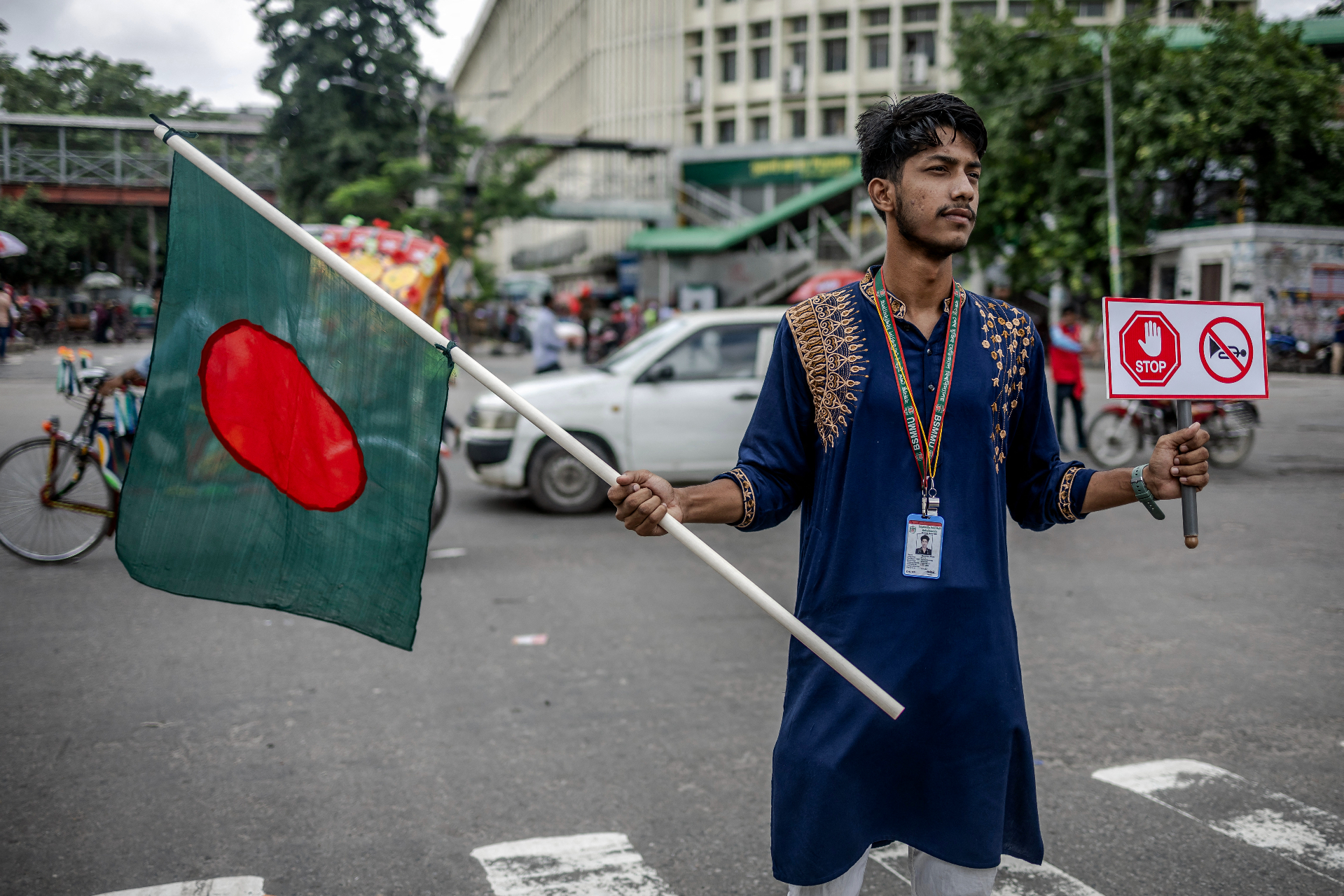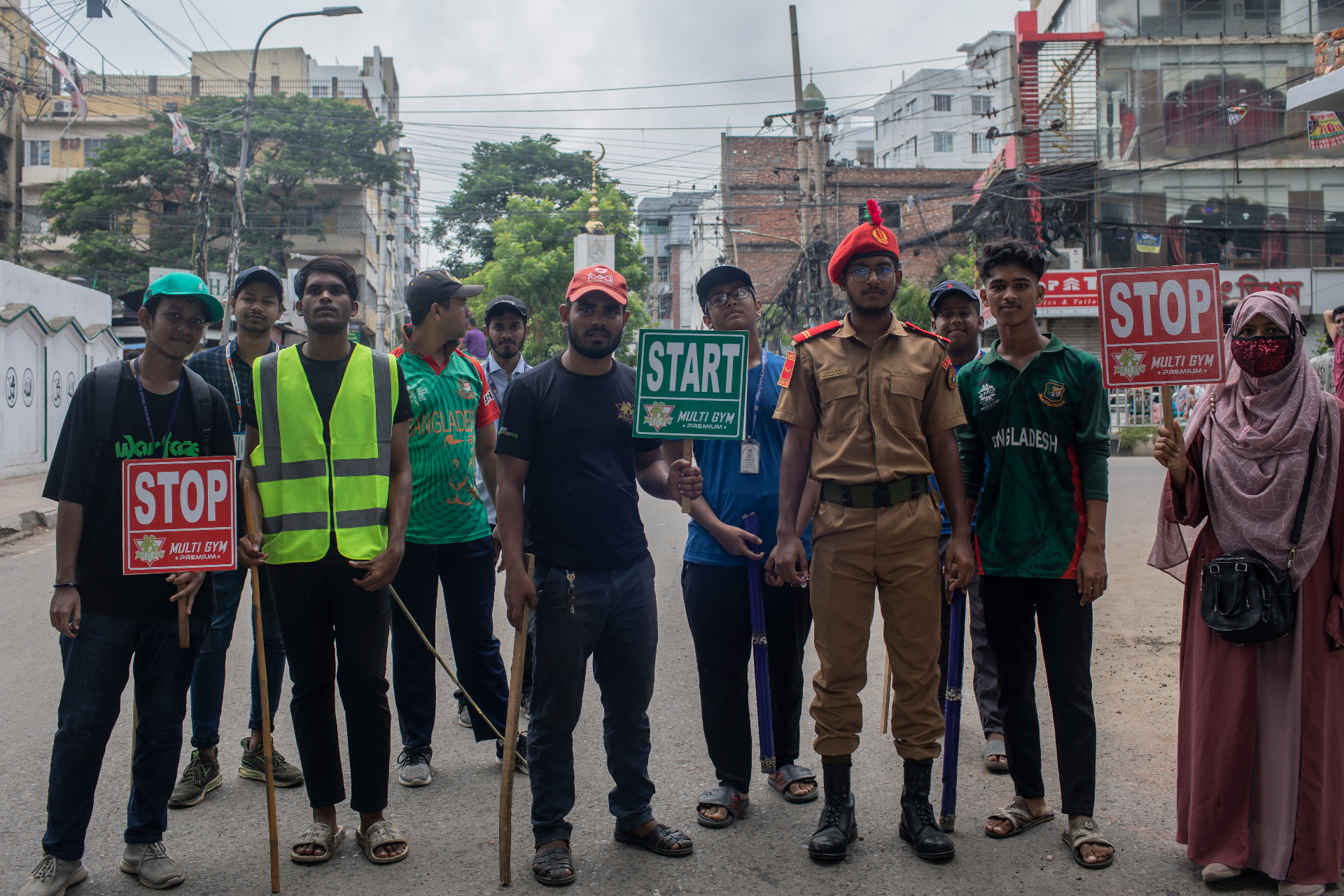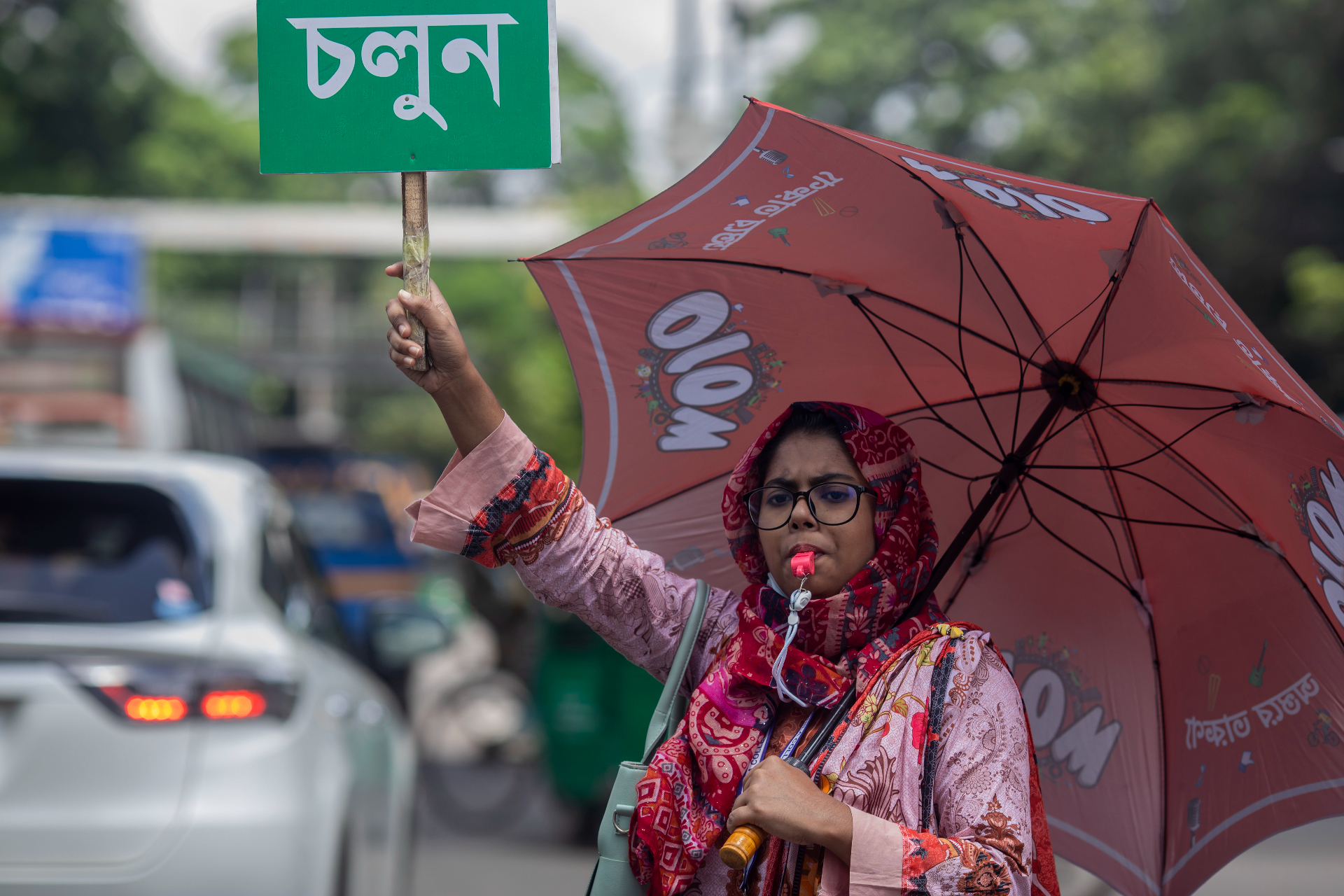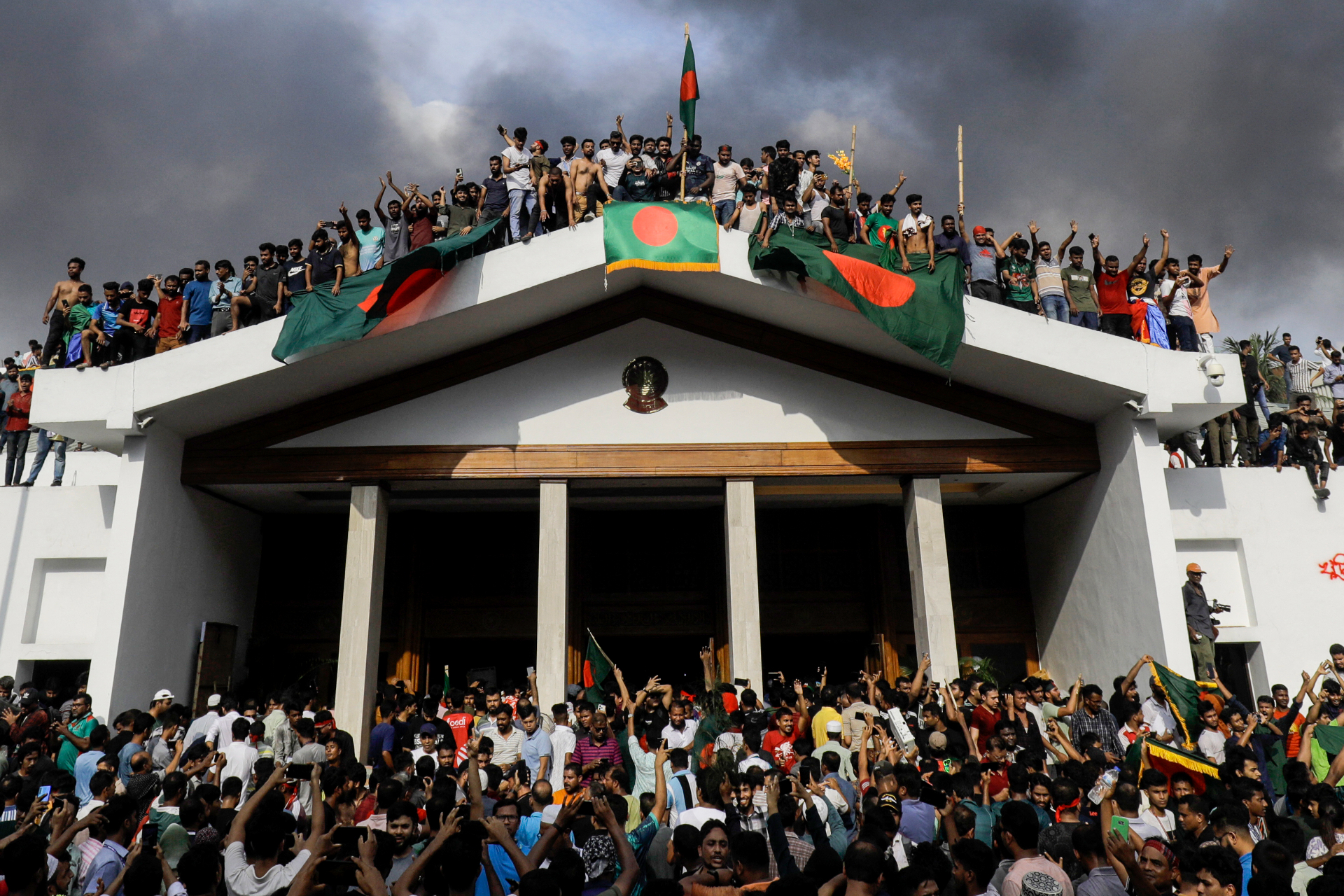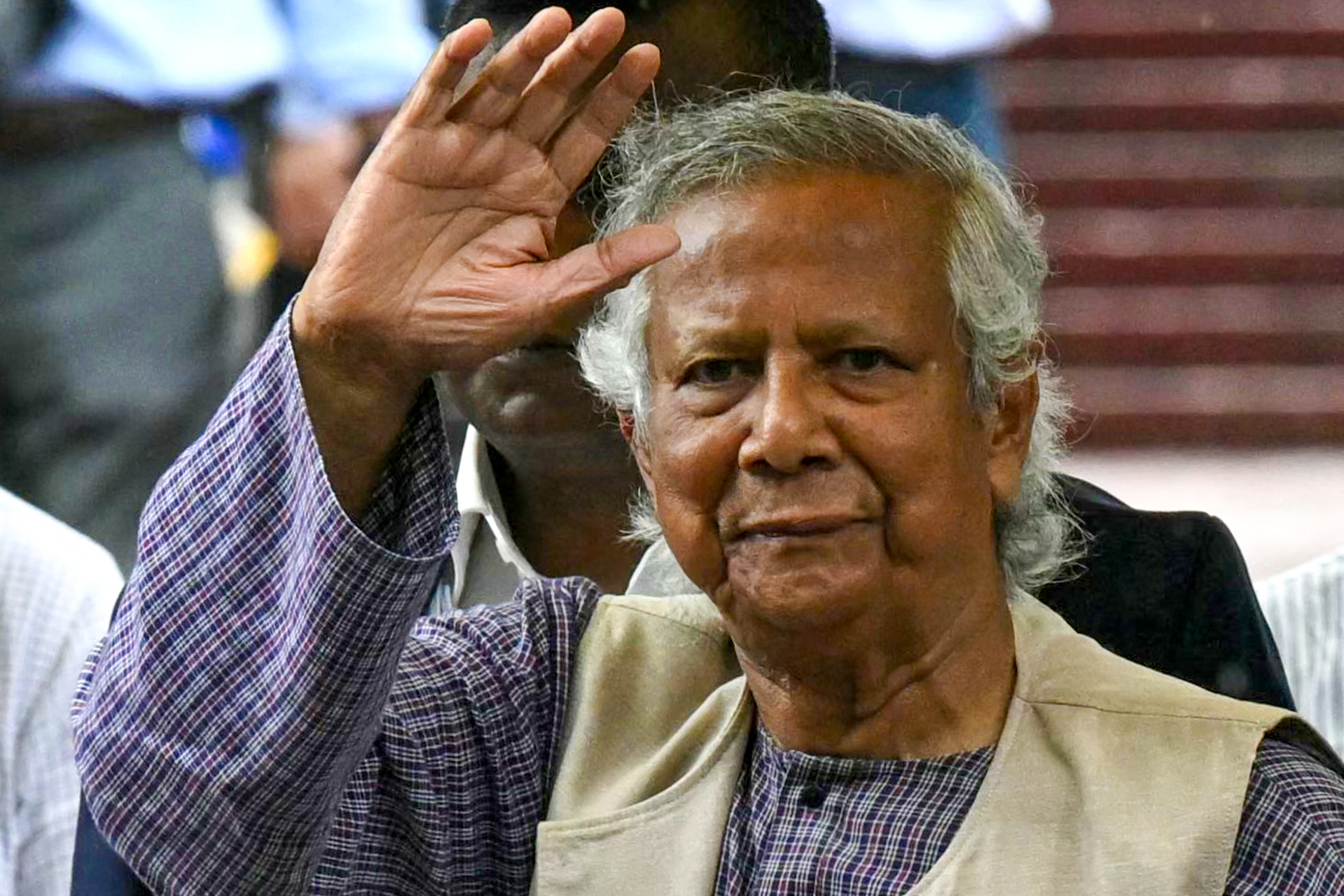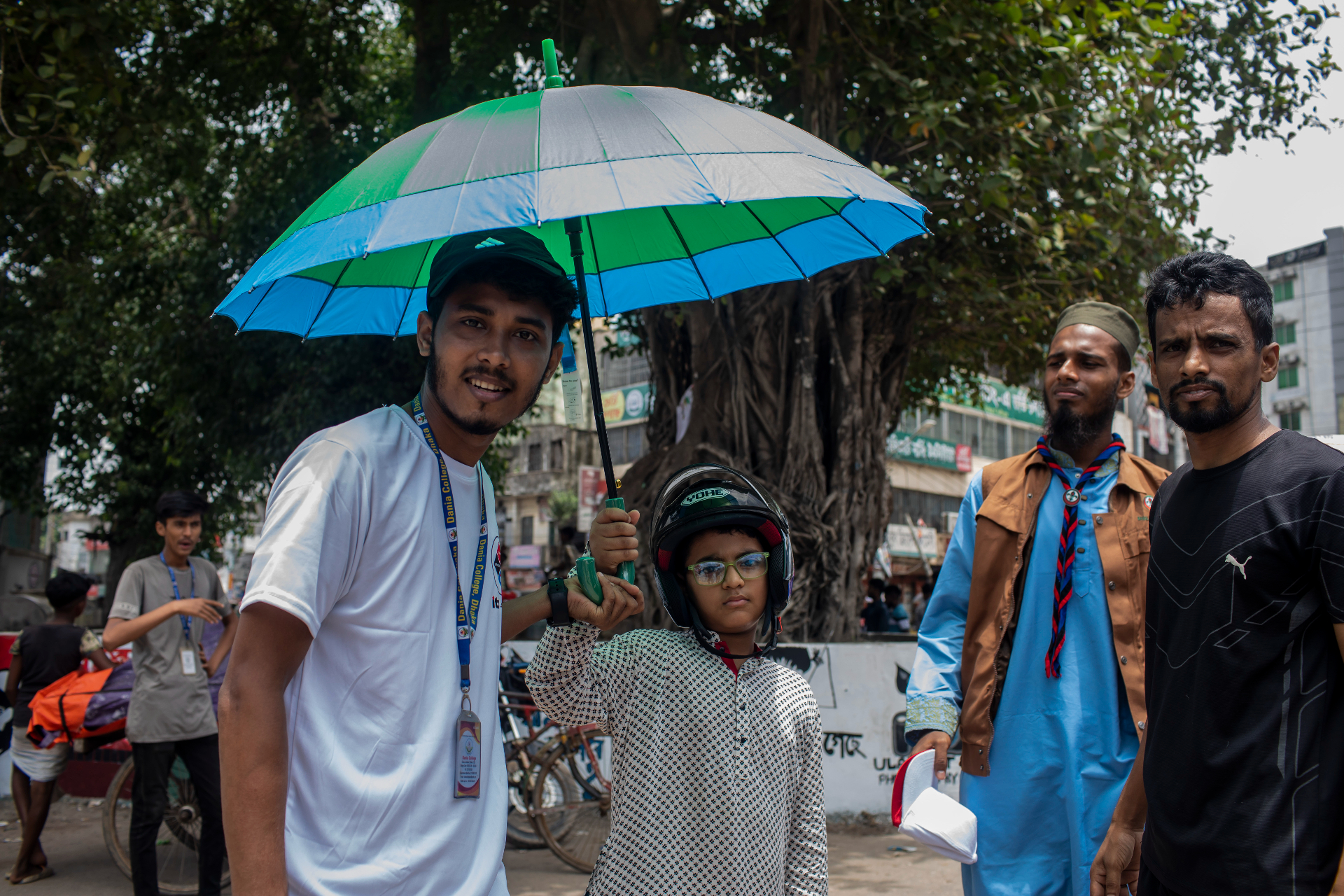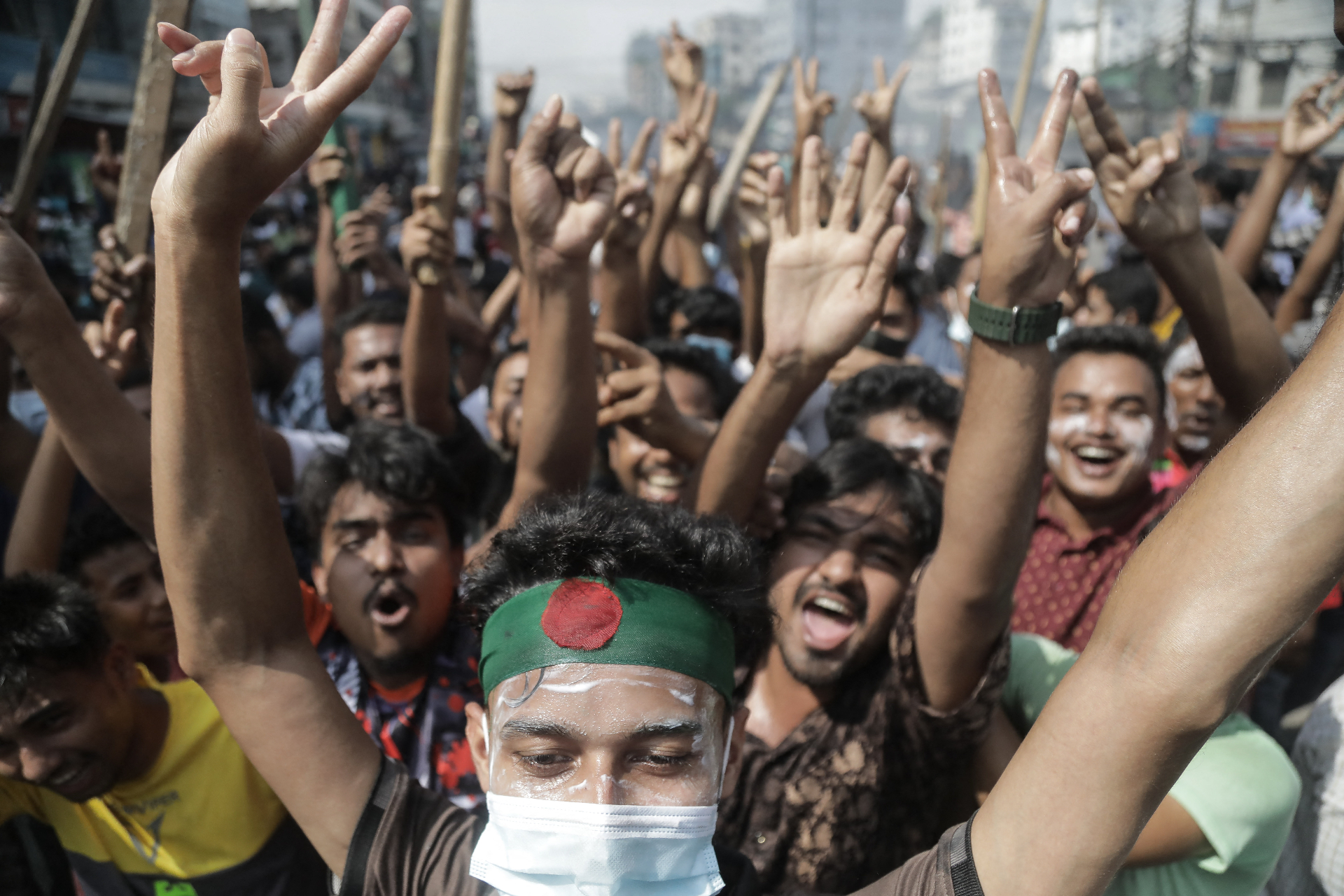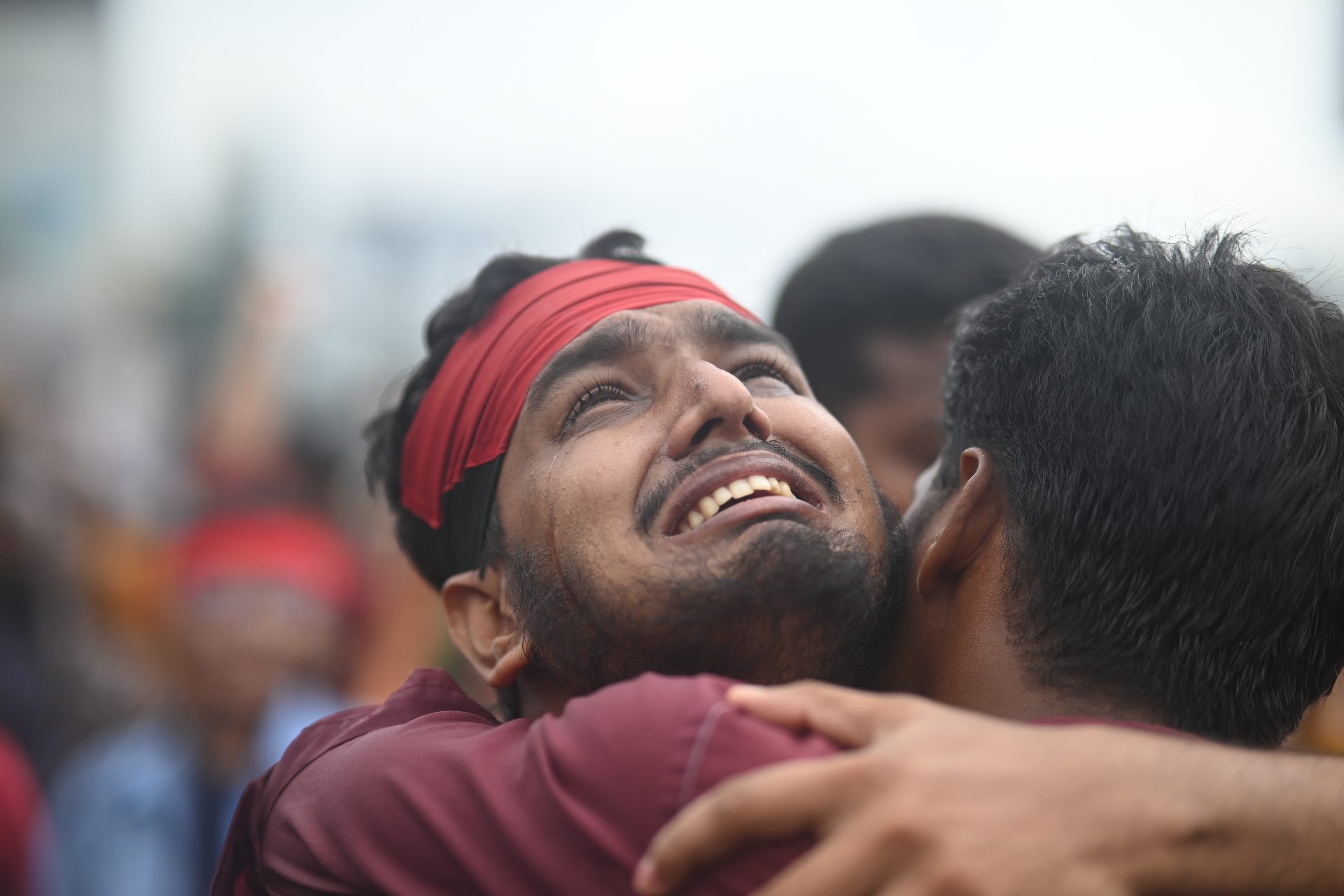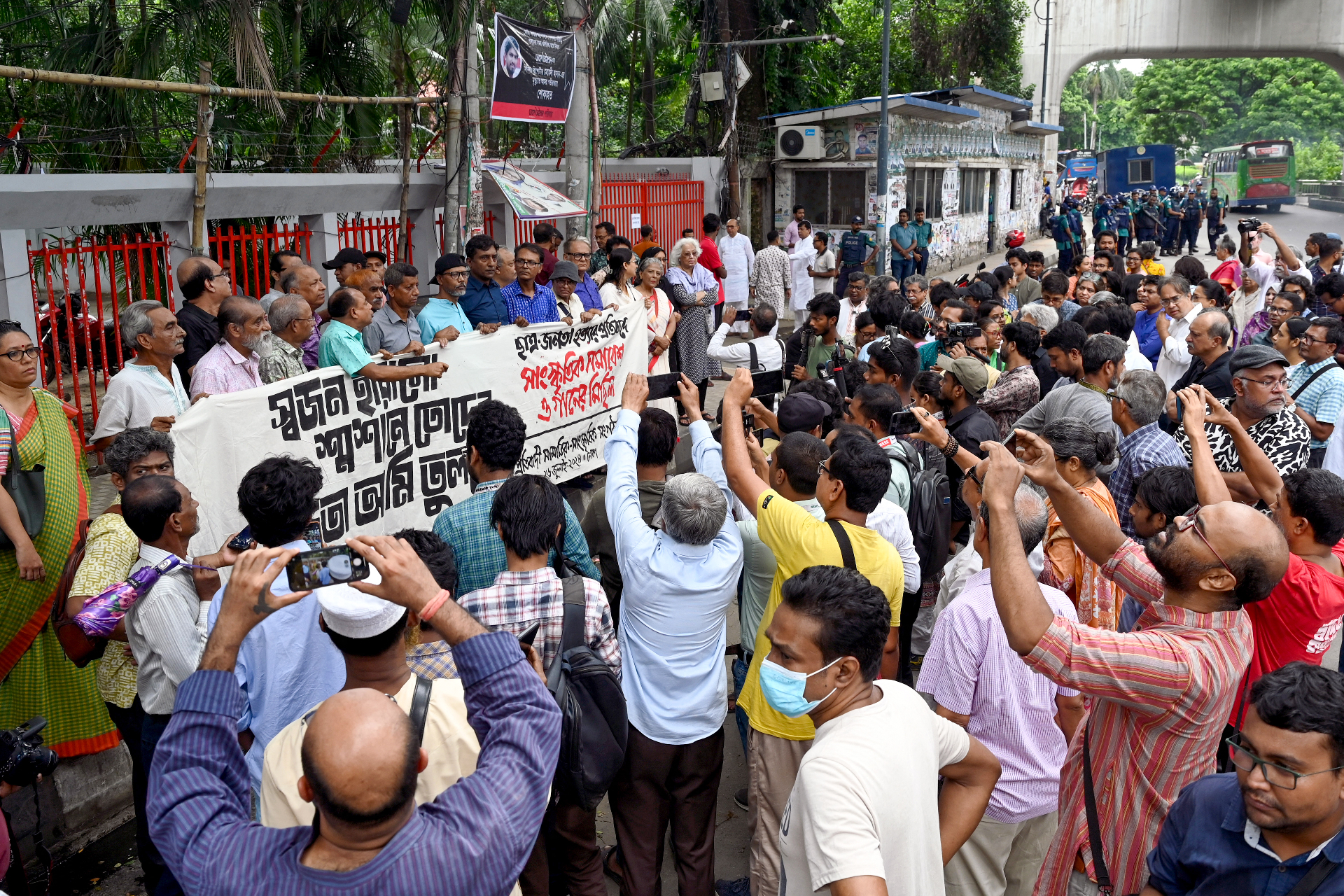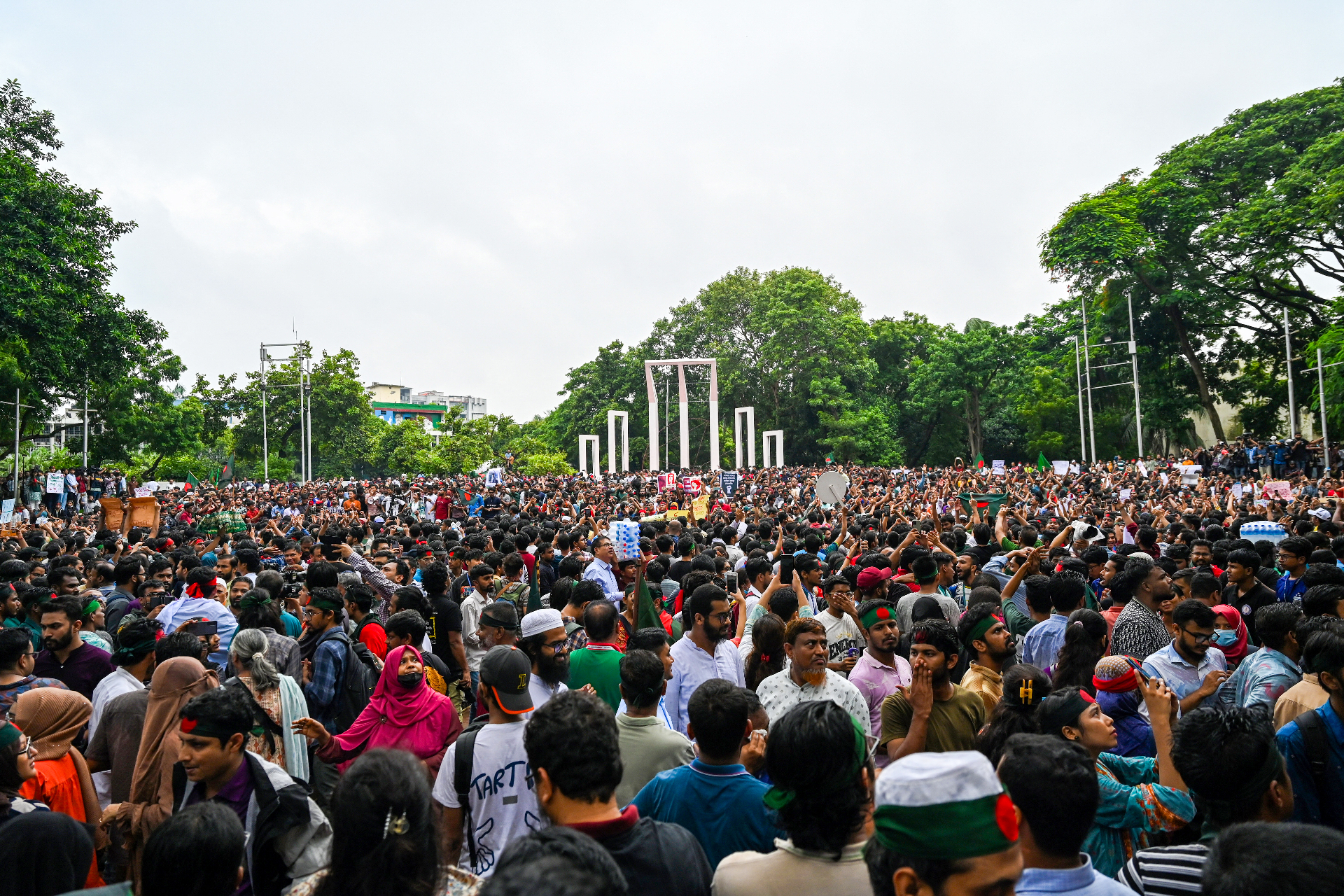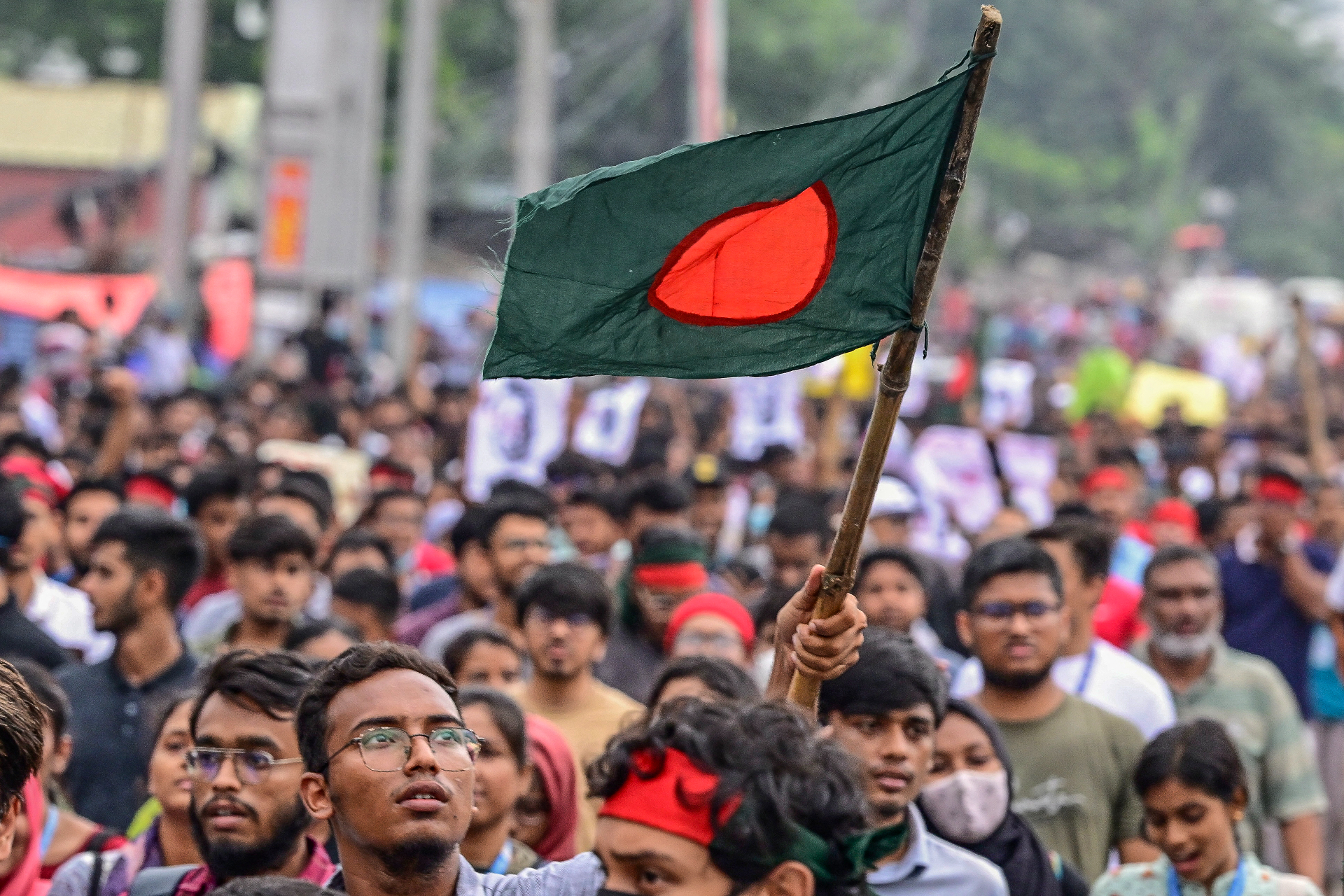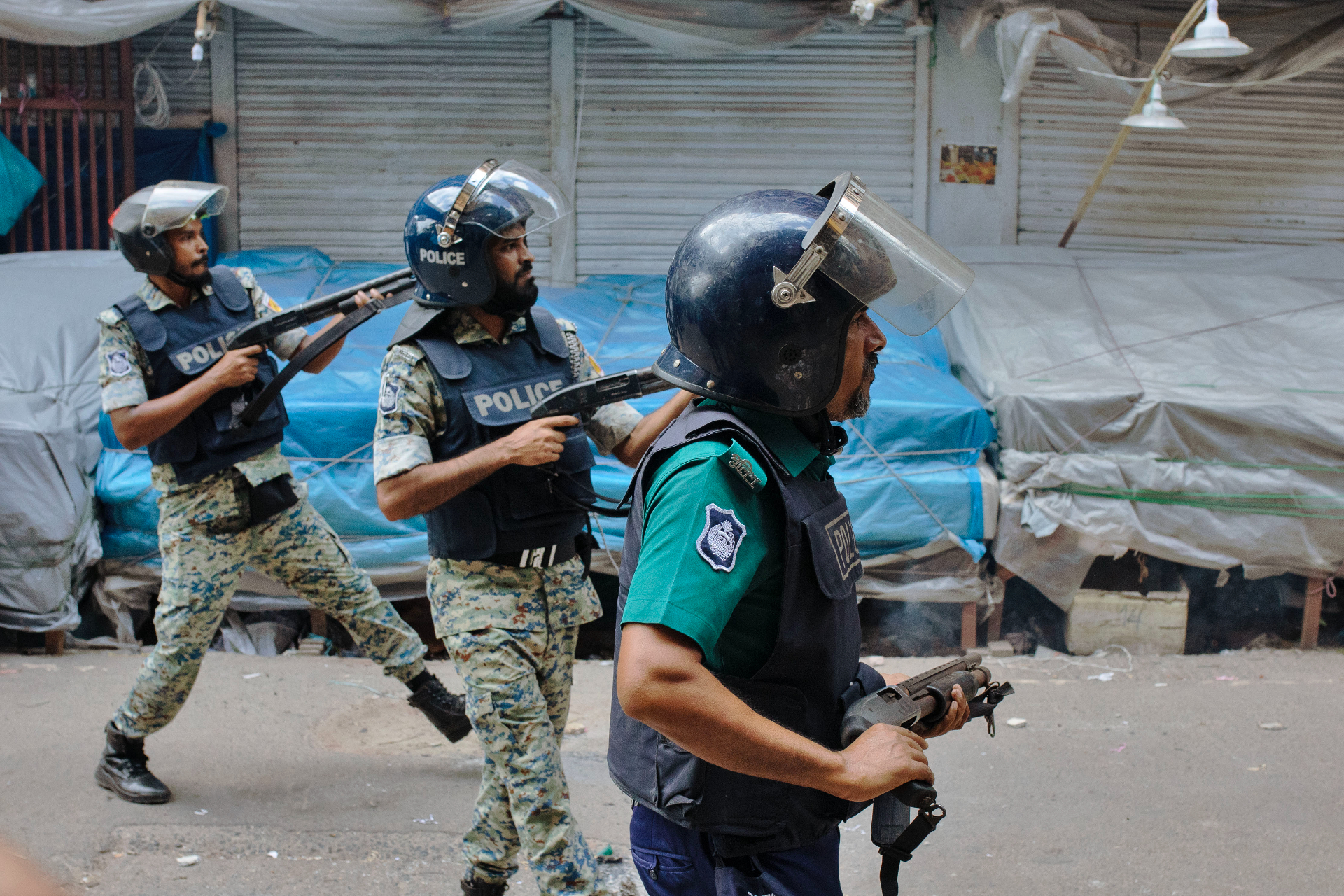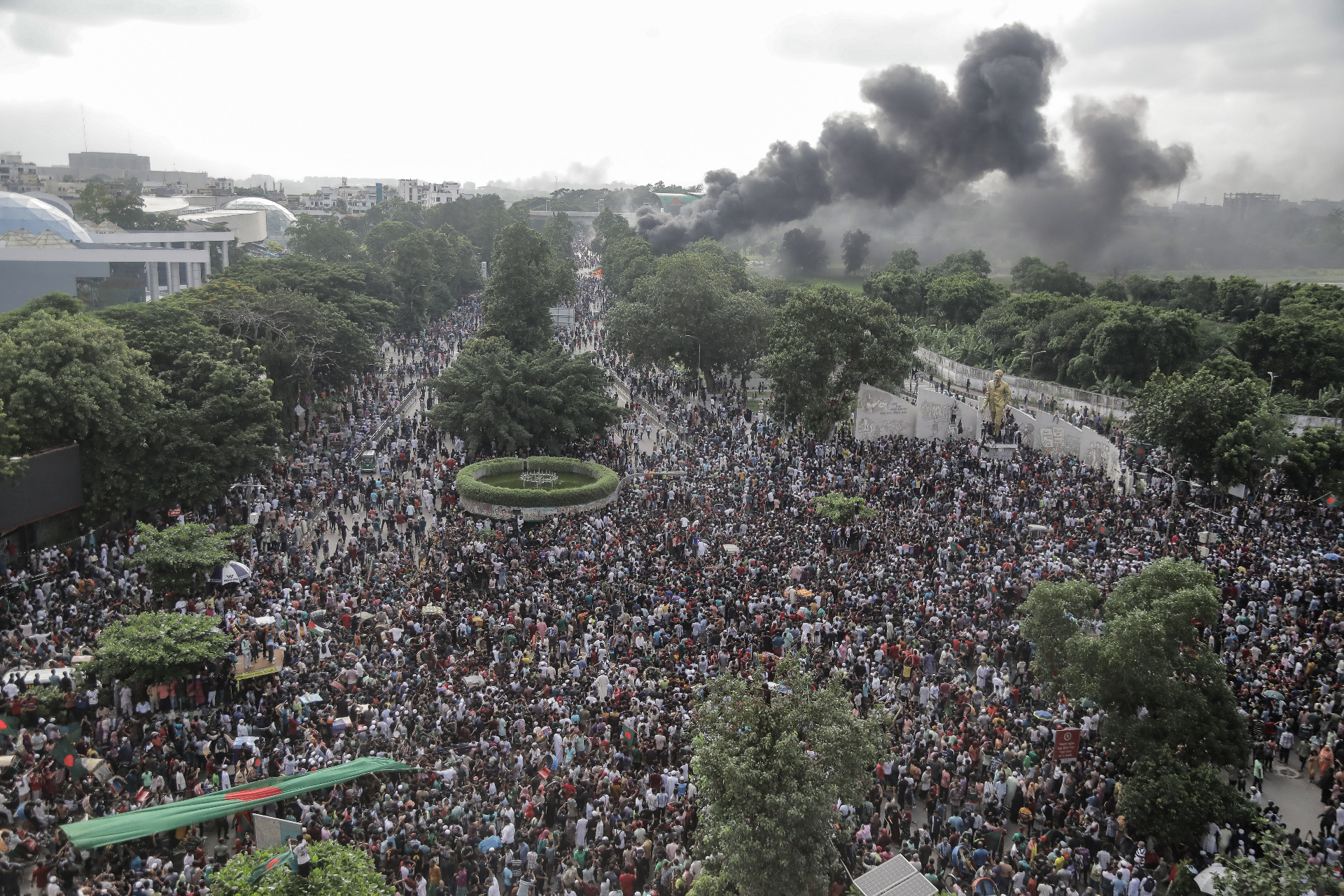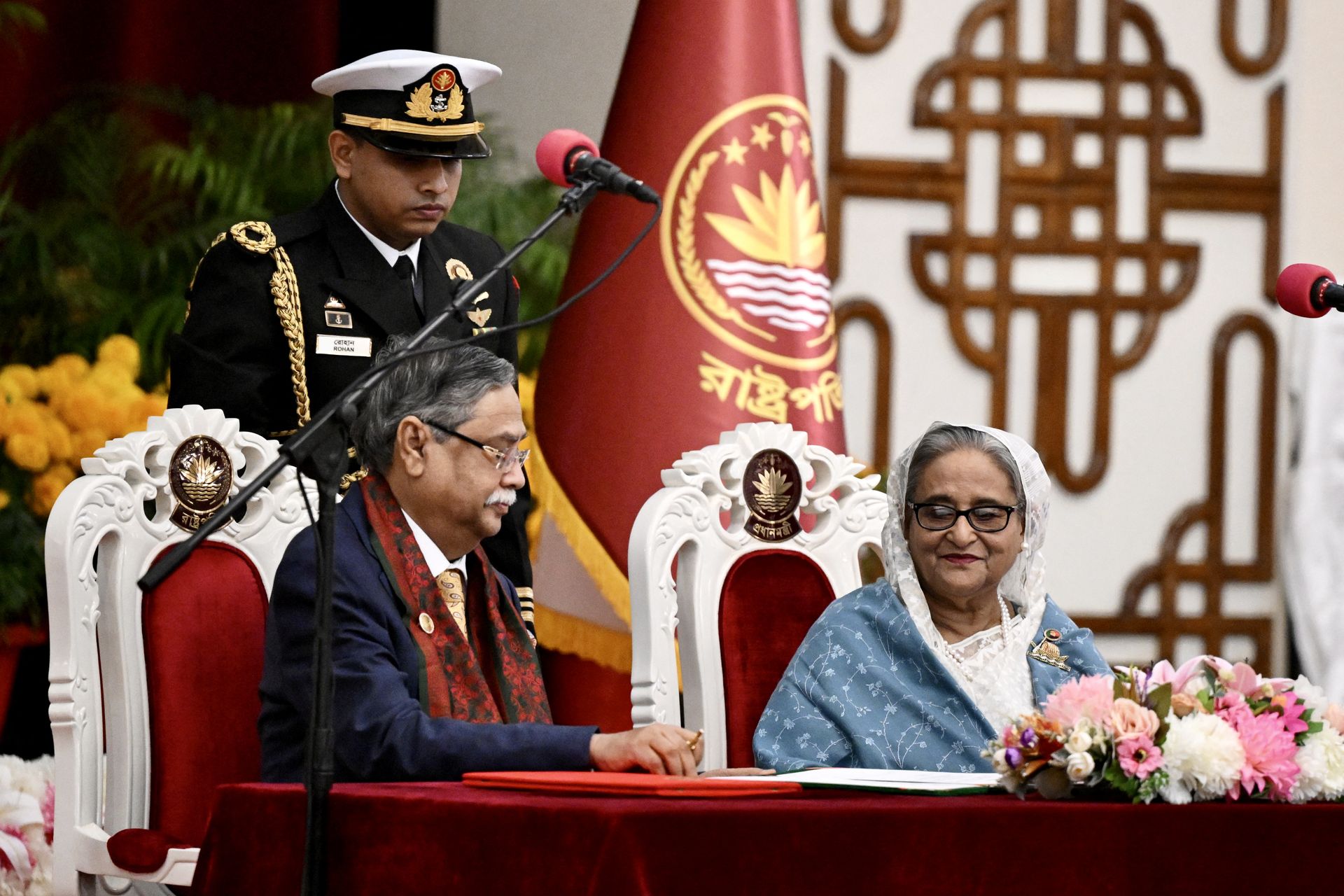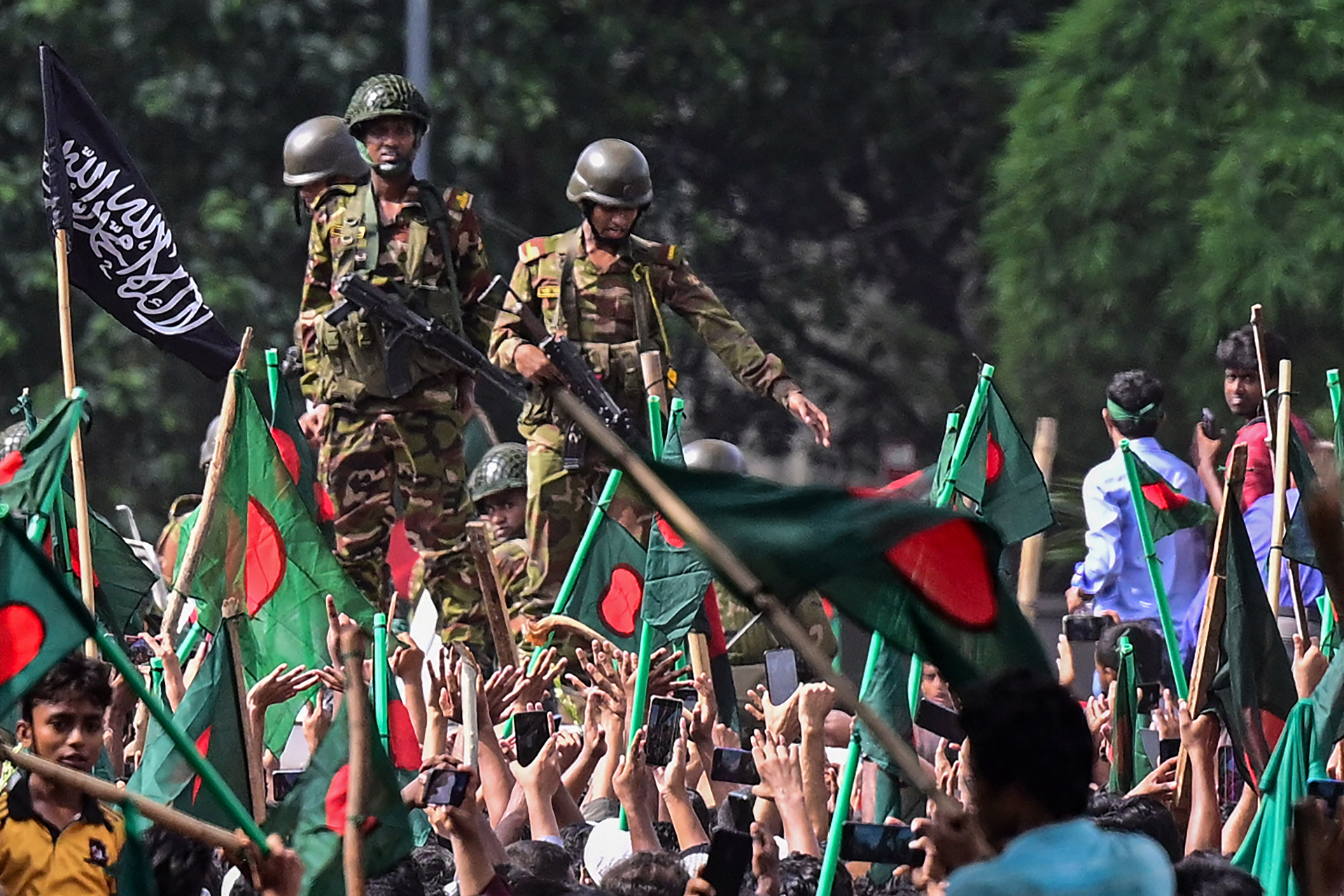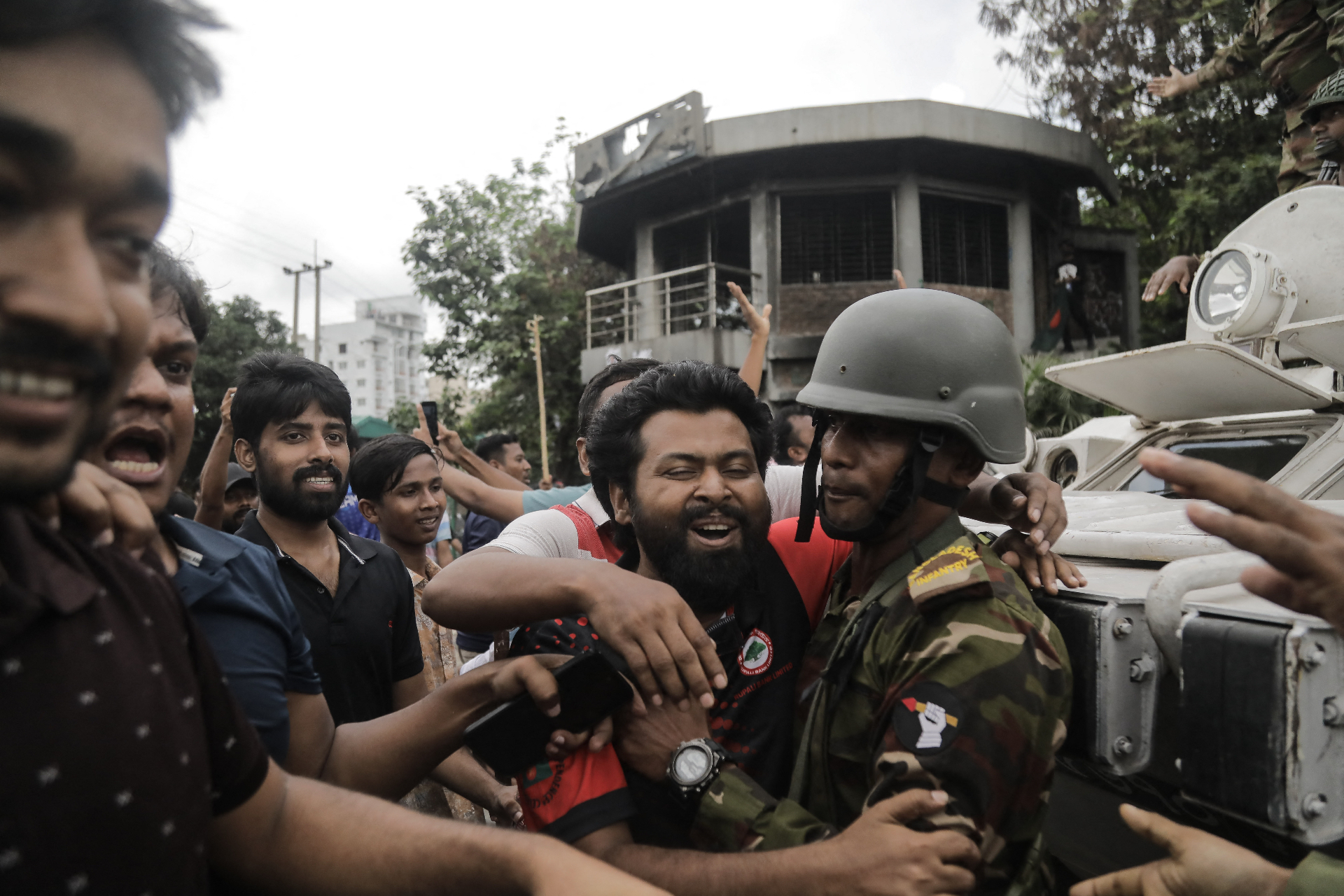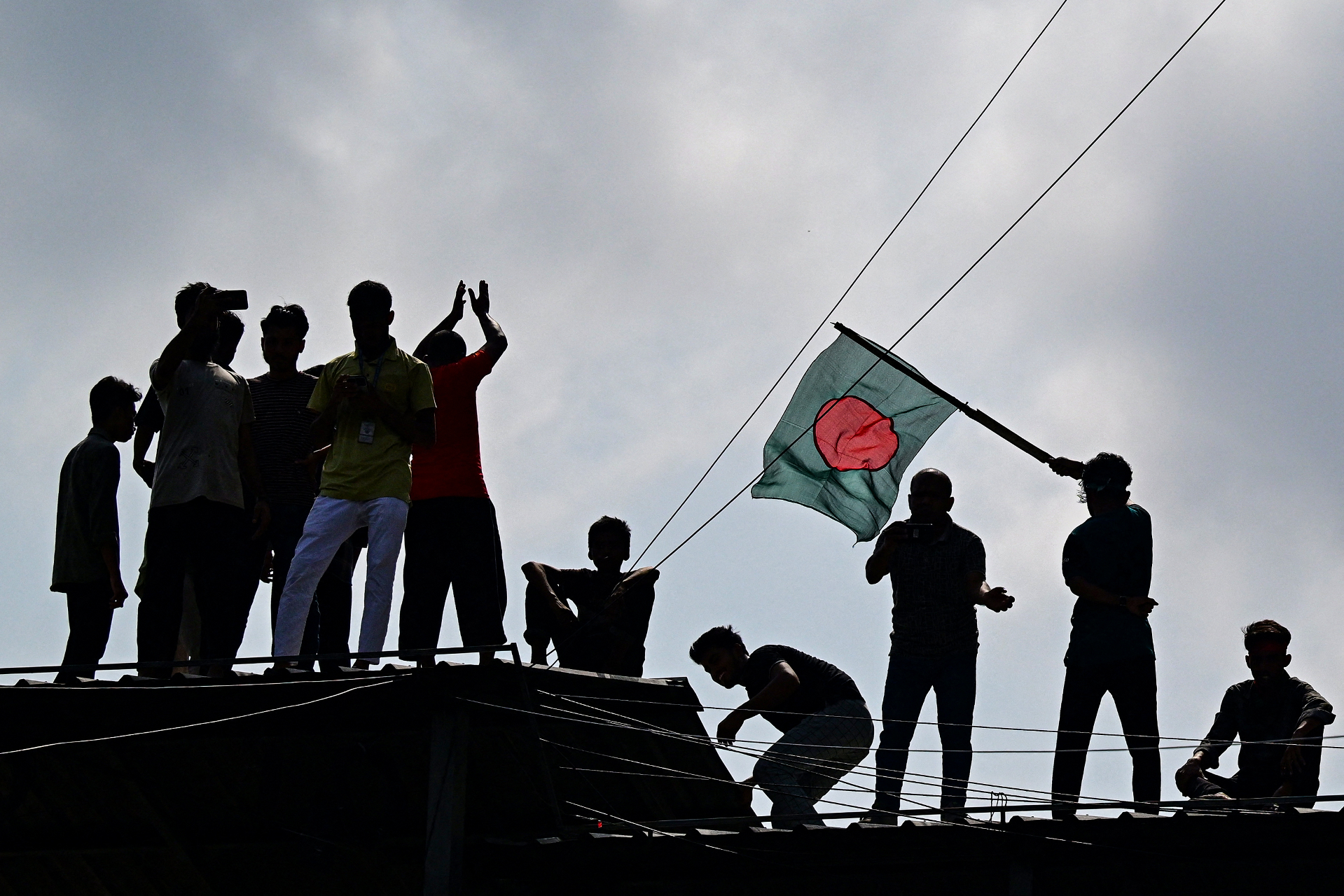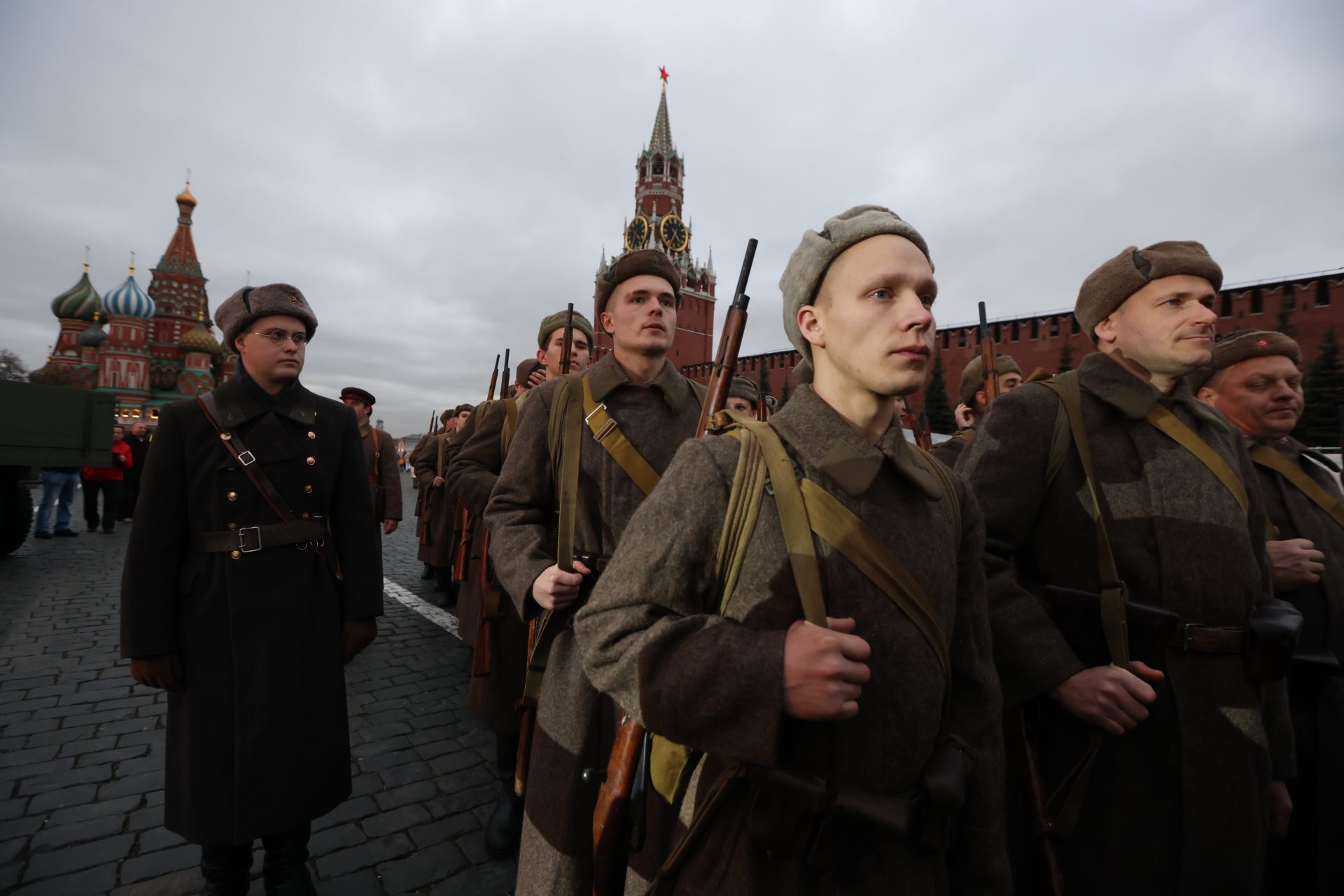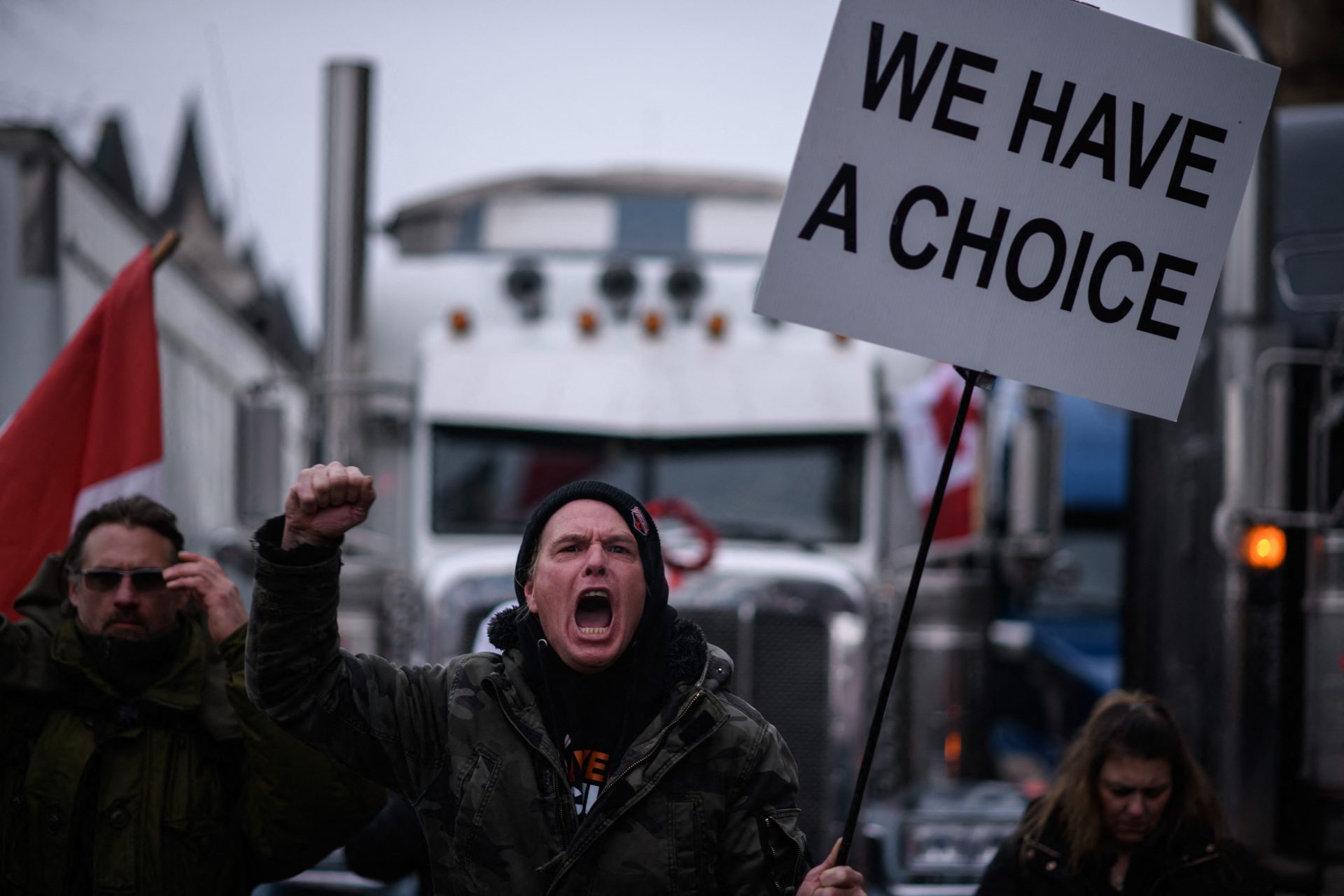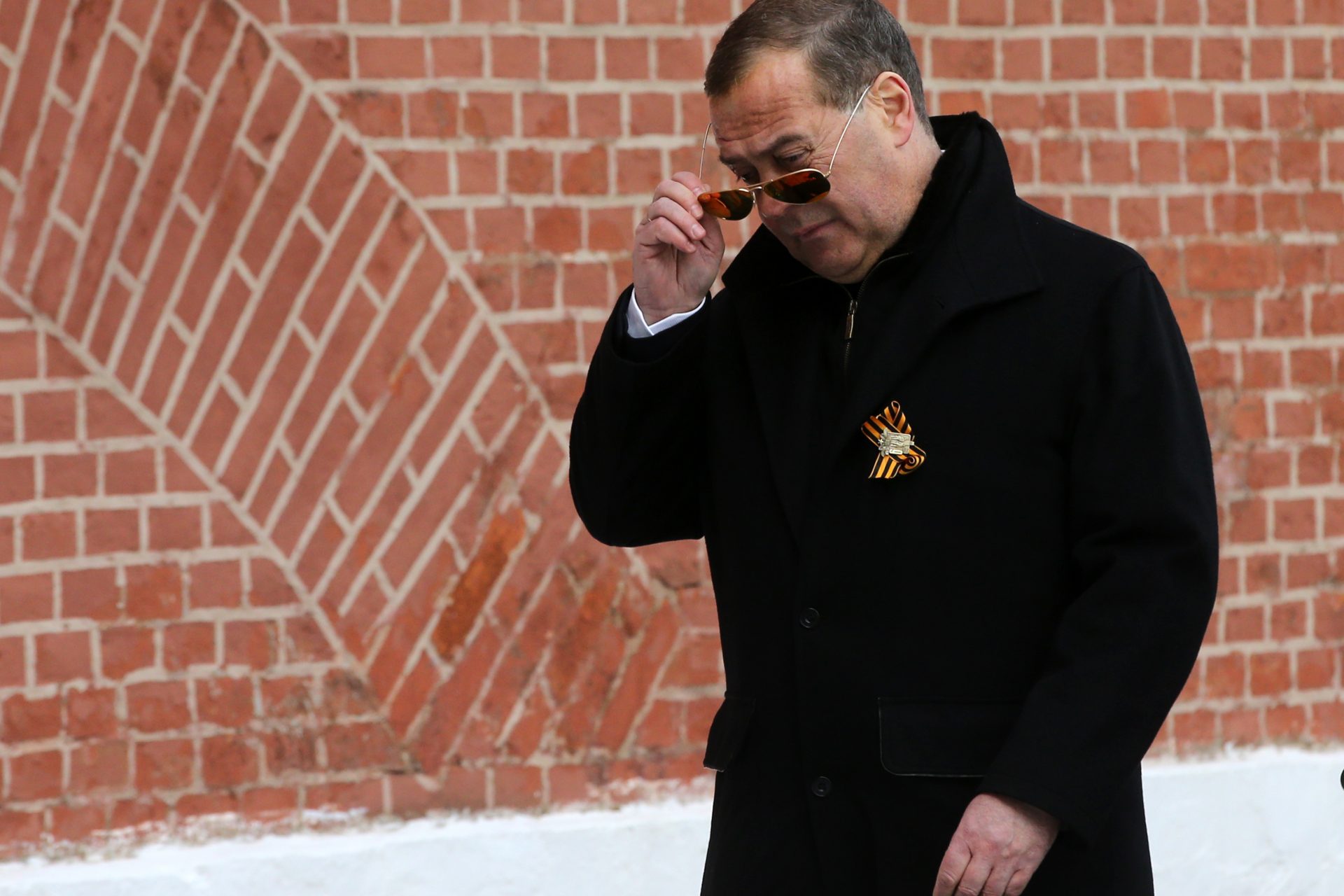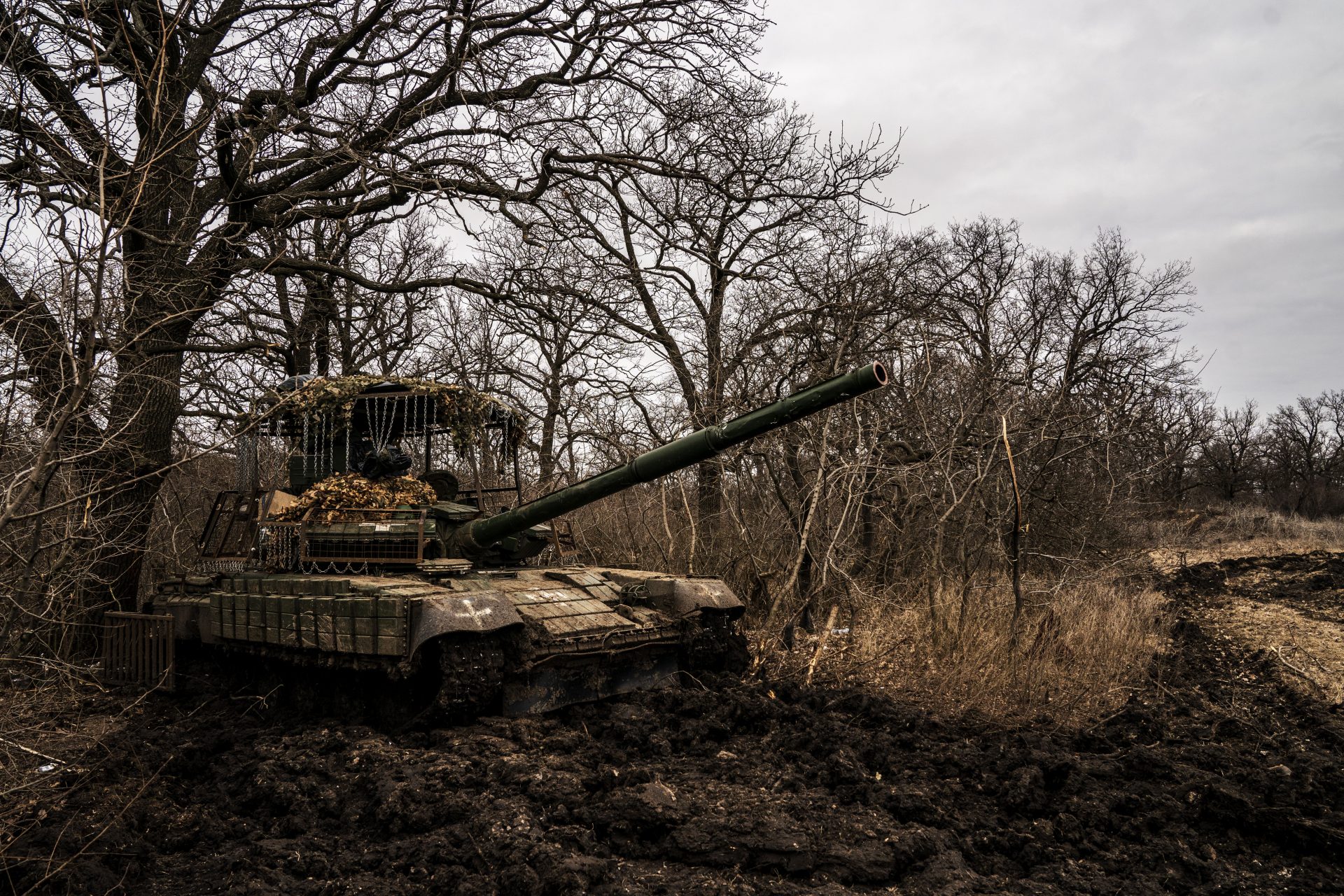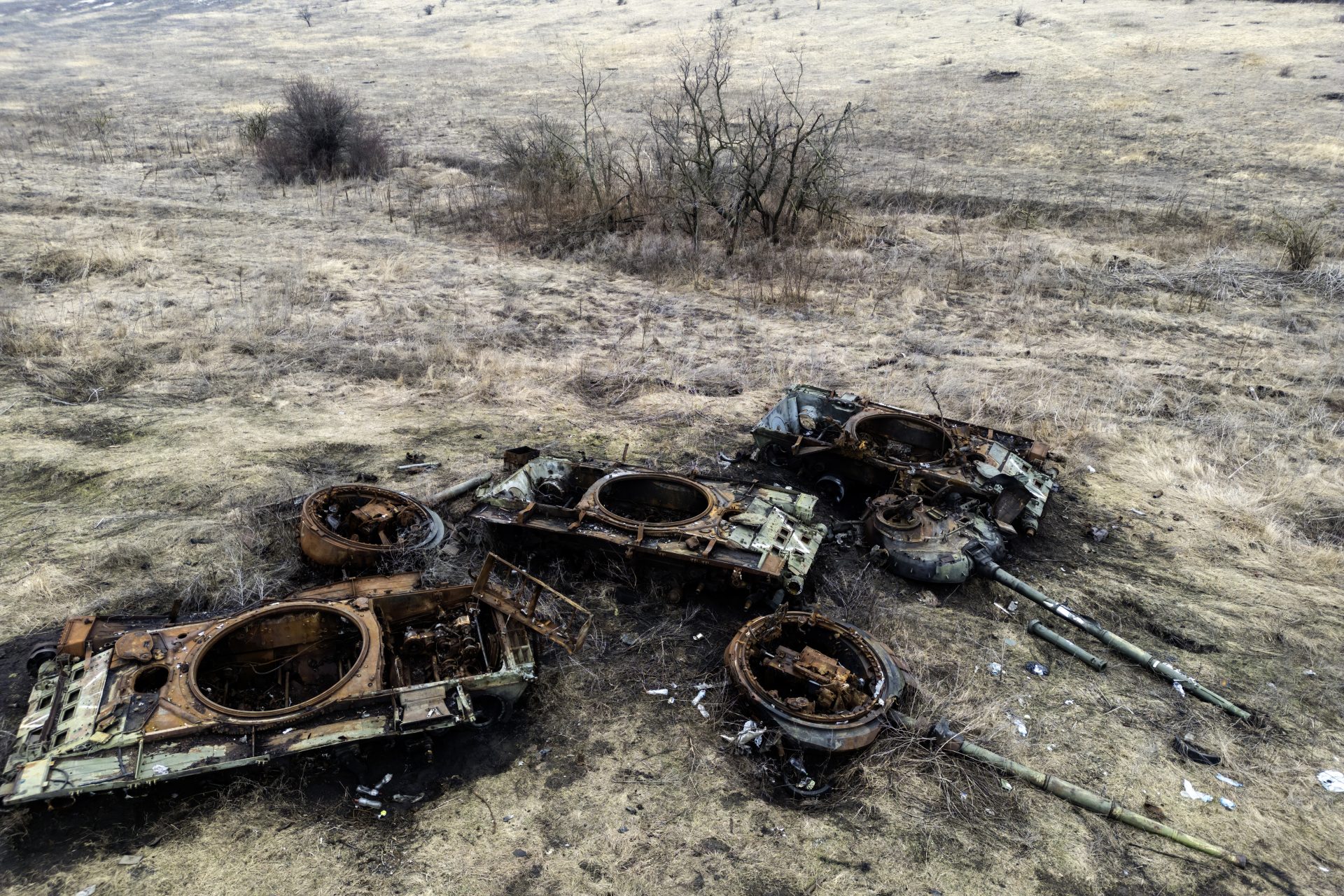Bangladeshi students lead the recovery after ousting their 15-year ruler
Bangladesh is trying to recover order after weeks of violent protests that ousted former Prime Minister Sheikh Hasina, and the students behind the demonstration are taking the lead.
AP News, the NY Times, and the BBC visited Dakhar, the country's capital, and witnessed how the students returned to the city to order.
The NY Times described how students were running the streets in the capital after most police officers went into hiding, fearing retaliation for their deadly repression of protests.
The students organized shortly after Ms. Hasina resigned and fled the country, and the military announced that it would form an interim government after consulting with the students and other organizations.
They chose the 84-year-old Nobel laureate Muhammad Yunus to run the temporary government. According to the NY Times, Mr. Yunus was among the leaders Ms. Hasina considered a political threat for years.
But studenst are handling more than the small daily tasks of police. According to AP News, two of the protests leader are now holding ministrys.
Hasina was ousted following weeks of widespread protests against her leadership. The demonstrations started peacefully but became increasingly violent.
The NY Times and CNN place the death toll of the protests on over 300 people. According to UNICEF, at least 70 children have died in the demonstrations.
The demonstrations started weeks before. Students from the University of Dhaka (the capital) took to the streets to request a change in the system to assign government jobs.
The system in Bangladesh had quotas so that certain groups have guaranteed access to half of all government jobs. The NY Times said relatives of the veterans of the independence war against Pakistan are one.
The students demanded a change in the system to guarantee merit-based candidate selections. After protests, the government changed the system in 2018, but the High Court reinstated it.
As the protests continued, Ms. Hasina deployed the police and paramilitary forces against the demonstrators, dramatically raising the death toll. The former PM also ordered a curfew and internet blackout.
The repression and growing death toll widened the motivation for the protests and rallied other demonstrators behind the students to demand an end to Sheikh Hasina's increasingly authoritarian government.
According to The NY Times, Ms. Hasina has governed Bangladesh for around 15 years since 2009. She is the daughter of the country's founding leader and oversaw steady economic growth.
However, critics cited by the newspaper also said that the 76-year-old PM had steered the country towards a one-party regime and became intolerant of the opposition.
The military and students have made clear that the interim government must be temporary. The opposition party has clarified that it will give gobernability to Mr. Yunus until the turmoil eases.
According to AP News, some experts and politicians are concerned over the student's lack of political experience and fear they could take too long calling new elections.
Still, according to The NY Times, Ms. Hasina's long rule has divided the nation by empowering supporters and punishing opposition, making it difficult to restore order and heal.
More for you
Top Stories



